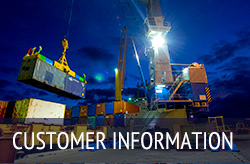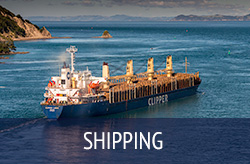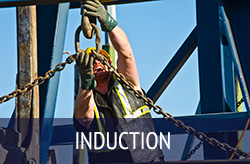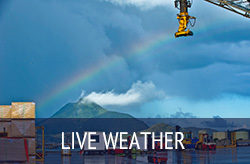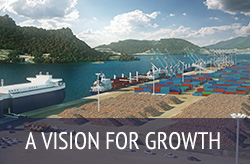Harbour listening device to give real-time alerts about whales and dolphins
A specialist New Zealand acoustics firm has launched technology that can identify and report in real time the presence of marine mammals visiting Whangarei Harbour. This week (Thursday 26 September) Styles Group and Northport installed a moored buoy containing an acoustic detection system and tracker in Marsden Bay, near the Whangarei Harbour entrance.
The buoy replaces acoustic devices that Northport has been using for several years to collect data about marine mammals in the harbour. Information was recorded and stored on these devices underwater and retrieved manually every few months. The Cetaware system will transmit the same findings in real time, enabling the port ultimately to manage its marine operations to protect whales and dolphins in the channel.
The system is a ‘passive’ listening device. It detects the sounds that whales and dolphins make and does not use any form of sonar or underwater signal to detect them. The software can identify the species of animal and, if several hydrophones are used, calculate the three-dimensional position (latitude, longitude and depth) of a noise source. It sends that information, instantaneously, to any internet-enabled device.
It is based on millions of hours of recordings and uses several AI-based deep-learning algorithms to detect and classify different marine mammal species. The Northport system will be set up to measure underwater noise levels, and to detect and classify dolphins and orca entering the harbour.
This is the first time the Cetaware system has been installed to send real-time data in a permanent setting. Styles Group said Northport was the perfect site to showcase its capabilities to domestic and international customers.
“This technology changes our marine mammal monitoring capability,” said Northport chief executive Jon Moore. “Because the information is supplied to us in real time it will enable us to manage potential operational interactions with marine mammals.”
The Cetaware buoy is solar-powered, reducing the amount of maintenance required. It has GPS tracking devices, enabling monitoring and retrieval if it breaks free from its mooring. And it has radar reflectors and navigation lights for easy detection and identification.
Styles Group and Northport intend to make the data collected by the Cetaware buoy accessible to interested parties such as mana whenua, scientists, the Department of Conservation and Northland Regional Council once the system trials have been completed.
Styles Group director Jon Styles said this would advance understanding of the behaviour of marine mammals in the harbour. The information would be available “more or less” in real time for these groups but the data feed available to the general public would be delayed slightly for the protection of the underwater visitors.
The Cetaware system will be trialled for about three months. During this time the existing manual acoustic monitoring equipment will remain in place and the two data-sets will be compared for accuracy and detail.


